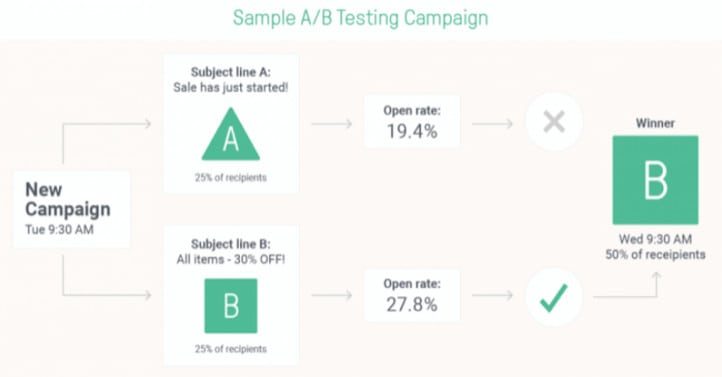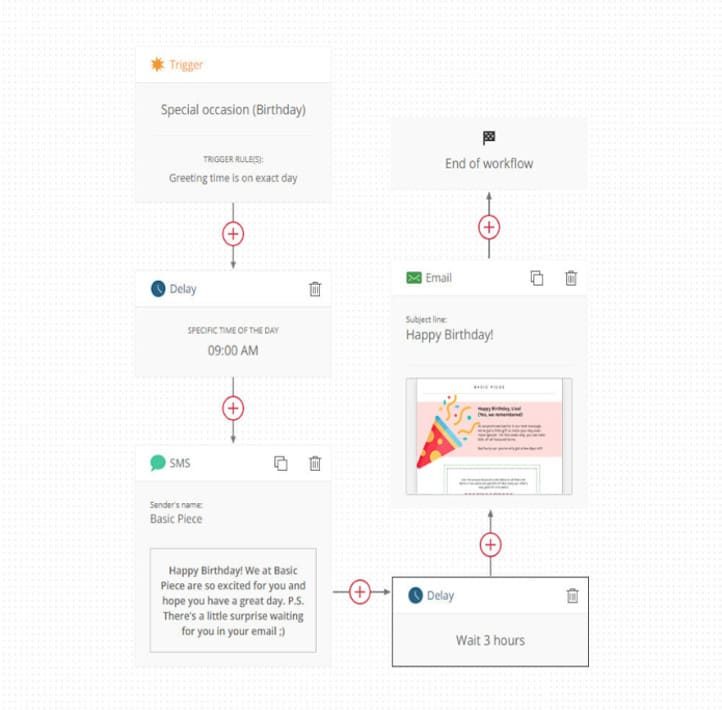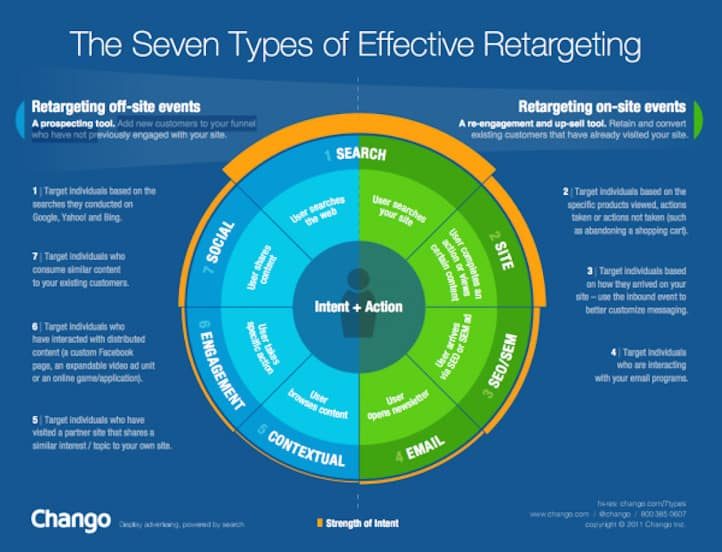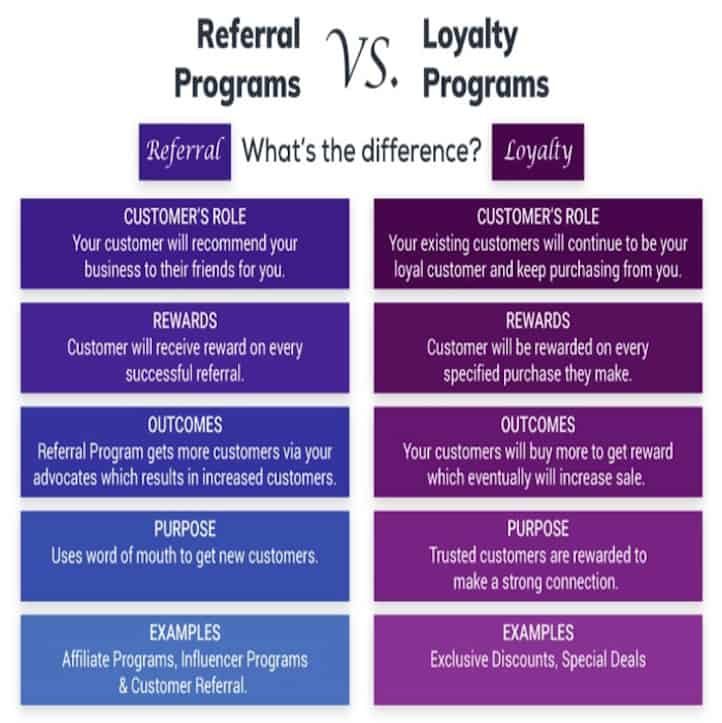Marketing automation might sound like an unnecessary complication, but the reality is that automating your digital marketing practices will simplify your workflow and help you develop more complex campaigns in a fraction of the time. You can optimize every aspect of your marketing strategies with the right approach and a powerful digital marketing tool.
In this article, we’ll cover some key ways in which automation can transform your marketing practices and help you generate more traffic, subscriptions, and sales. From saving time and money to analyzing your tactics on a deeper level, it’s impossible to overstate the benefits of automation for digital marketers.
1. Efficient A/B Testing
A/B testing is one of the most reliable ways to evaluate your own marketing and identify your strengths and weaknesses. You don’t technically need an automation tool to run an A/B test, but marketing software can run tests much more efficiently and automatically collect relevant data.

If you have two images of a given product, for example, you could A/B test their order to determine which one is more successful as the lead product image. After gathering data on a small scale, you’ll have the information you need to make a data-driven decision rather than relying on intuition. While many skilled marketers have excellent judgment, there’s nothing better than raw data when it comes to optimization.
Furthermore, A/B testing doesn’t have to be limited to the content itself—you can also test other factors such as the right time of day to post on social media or the best name to use as an email sender. These data points will allow you to optimize nearly every aspect of your digital marketing practices.
Running an A/B test doesn’t involve much extra work beyond designing the variants you want to compare. With that in mind, marketers can easily set up numerous A/B tests at the same time, giving them a consistent stream of new information about their successes and failures. Just be sure to test one variant at a time to really know what’s affecting results. Ongoing optimization is crucial for staying ahead of the competition and generating as many sales as possible.
2. Sophisticated Workflows
Marketing is all about targeting the right leads with the right content at the right time. That’s an extraordinarily complicated task if you’re doing it on your own, but it’s surprisingly simple with the aid of contemporary marketing software. Once you set up an automation sequence, you can watch the clicks and orders roll in without having to spend time sending messages yourself.

If a user subscribes to your email newsletter, for example, you can configure a workflow to automatically send them a welcome message and invite them to learn more on your website. With tens, hundreds, or thousands of marketing emails to be delivered every day on autopilot, you’ll even be engaging with leads on your day off.
Cart abandonment is another critical workflow for digital marketers in 2025. A lead who adds a product to their cart is clearly interested in your products, but most online shopping carts are abandoned before the sale.
One or two reminders along with a small discount or exclusive offer will convert some of those abandoned carts into completed orders. Instead of monitoring that data yourself, you can trust your marketing automation tool to send those follow-up messages at the perfect time.
3. Retargeting Opportunities
Leads often need to engage with a brand multiple times before they’re ready to make their first purchase, so retargeting is a crucial step in the sales cycle. If a user looks at a certain product on your site, for example, you might want to show them that product a few days later in a Facebook ad.

Marketing automation simplifies the process of connecting to users after each engagement and developing seamless campaigns across multiple channels. The Facebook pixel is a perfect example of this—once you install it on your site, you’ll automatically gather customer information that can be used for targeting purposes later on.
4. Referral and Loyalty Programs
Referral and loyalty programs are highly effective methods of finding new leads and retaining your existing customers.
A small referral reward will give your audience an incentive to let their friends and family members know about your brand, and current referral tools make this simpler than ever. Furthermore, referred leads come in with extra trust in your brand since they already know someone who can vouch for your products. It’s, therefore, no surprise that referrals are more likely to convert than other leads.

Loyalty programs generally provide a reward for orders or other forms of engagement. Keep in mind that customer retention is just as important as customer acquisition, if not even more so.
Think of it this way—if you double your company’s average lifetime customer value, you’ll only need half as many customers to generate the same number of sales. Referral and loyalty rewards are two of the easiest and most cost-effective ways to increase your sales.
5. Content Scheduling
Most marketing automation tools give you the option to schedule posts and other actions ahead of time rather than having to perform them yourself. With a schedule set up in advance, you won’t have to worry about posting on social media or managing any other minor day-to-day tasks. This will free up your team to focus on other areas of your business.
Managing all your channels and audience segments from a single application streamlines the process of overseeing campaigns and posting content at a consistent pace. You’ll be able to monitor your entire marketing schedule at a glance and make changes across multiple channels in just a few clicks.
6. Analyzing Your Sales Funnel
It’s extremely difficult to generate any informative marketing analysis without the aid of automation. A/B testing is critical for small-scale optimization, but it won’t always give you the insights you need to make larger judgments about the successes and failures of your current approach.

Before a customer places an order, they’ll need to become familiar with your brand, visit your site, and possibly join your email list or follow one of your social media profiles. Each of these actions brings your leads that much closer to their first sale. From there, your new goal is to keep that customer interested in your products or services for as long as possible.
Every marketing campaign has strengths and weaknesses, but issues at any one of those points of the sales funnel can cause problems for your entire organization. Even if you’re generating lots of email subscriptions, for example, you’ll have trouble converting them into value if your subscribers only want to read your content without being interested in buying your products or clicking through to your site.
Marketing automation helps users spot these trends more quickly and adapt their tactics based on comprehensive data. Without using analytics software, you could be spending too much time on some aspects of your campaigns while failing to identify more important weaknesses.
Automation can be confusing and even overwhelming at first, but it’s an incredibly powerful tool that every marketer should utilize. These are just a few of the best reasons to consider automating your digital marketing practices in 2021.
Marouane El Baghati
Marouane is an SEO specialist at Omnisend – a marketing automation platform for e-commerce. Preferred hobbies apart from blogging are reading about philosophy, latest e-commerce and technological innovation news. You can find his LinkedIn profile here.